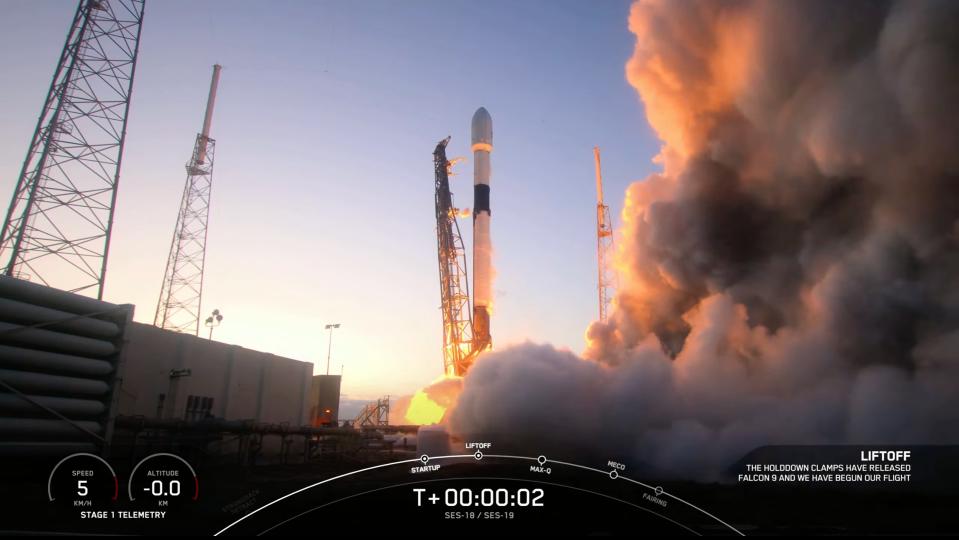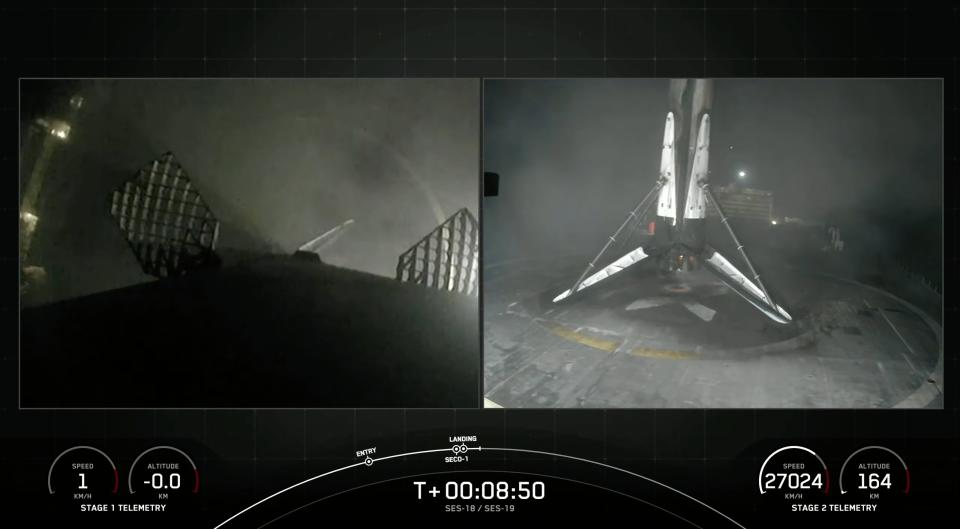SpaceX launches 2 rockets less than 5 hours apart

SpaceX pulled off a St. Patrick's Day doubleheader, acing two orbital missions on Friday (March 17).
The show began at 3:26 p.m. EDT (1926 GMT), when SpaceX launched 52 of its Starlink internet satellites to orbit from Vandenberg Space Force Base in California.
Then, at 7:38 p.m. EDT (2338 GMT), a Falcon 9 carrying the SES-18 and SES-19 telecommunications satellites lifted off from Cape Canaveral Space Force Station in Florida.
Both missions went according to plan: The Starlink satellites were deployed in low Earth orbit (LEO) on schedule, and the Falcon 9 successfully delivered SES-18 and SES-19 to geosynchronous transfer orbit.
Related: 8 ways that SpaceX has transformed spaceflight
Both Falcon 9 first stages came back to Earth safely as well, touching down at sea on SpaceX droneships less than nine minutes after liftoff.
It was the eighth liftoff and touchdown for the Starlink-launching Falcon 9 and the sixth for the rocket that lofted SES-18 and SES-19, according to SpaceX.

Related stories:
— SpaceX Falcon 9 rocket launches 2 satellites on record-tying 14th mission
— SpaceX rocket launch spawns spectacular 'jellyfish' in the sky (video, photos)
— SpaceX: Facts about Elon Musk's spaceflight company
The 52 Starlink satellites are joining more than 3,700 other spacecraft in SpaceX's huge broadband constellation, which will continue to grow far into the future: Elon Musk's company has approval to deploy 12,000 Starlink satellites in LEO, and it has applied for permission to loft 30,000 more on top of that.
SES-18 and SES-19 went farther afield. The duo are headed for geostationary orbit, about 22,200 miles (35,700 kilometers) above our planet. From that perch, they'll provide digital broadcasting coverage to North America, according to EverydayAstronaut.com.
Friday's launches were the 18th and 19th of the year already for SpaceX. And the liftoffs will keep on coming: Musk said last summer that SpaceX could launch up to 100 orbital missions in 2023.
Mike Wall is the author of "Out There" (Grand Central Publishing, 2018; illustrated by Karl Tate), a book about the search for alien life. Follow him on Twitter @michaeldwall. Follow us on Twitter @Spacedotcom or on Facebook.

